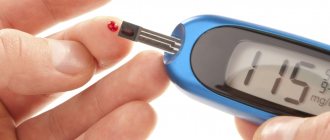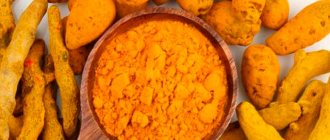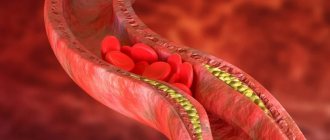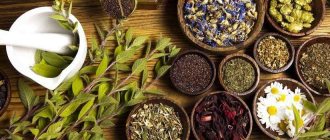Useful Features
The benefits of bean shells are determined by the presence of flavonoids, fiber, amino acids, magnesium, potassium, and vitamins A. B, C.
There are phytosterols, high-quality vegetable protein, iron, magnesium, carotene. Organic acids, hemicellulose, allantoin, copper, zinc, glucokinin, and trigonelline were identified. Medicinal properties:
- antiallergic;
- diuretics;
- anti-inflammatory;
- hypotensive;
- antimicrobial;
- antirheumatic.
Products based on bean pods effectively reduce sugar. Helps improve the condition of hypertension, kidney pathologies, rheumatism. Normalize salt metabolism. Indications:
- diabetes;
- cataract;
- cystitis;
- pancreatitis;
- colds;
- asthma;
- arthritis;
- atherosclerosis;
- skin lesions;
- cardiovascular, hepatic pathologies;
- stomach ulcer;
- migraine;
- pyelonephritis;
- hypertension;
- nervous disorders;
- gastritis due to insufficient acidity.
Bean flaps help strengthen blood vessels and remove excess moisture. They help with weight loss. Regulate metabolic processes, strengthen immunity, reduce cholesterol levels.
They have a beneficial effect on the skin, moisturizing and rejuvenating it. Promote muscle mass gain, removal of slag deposits and toxic compounds, dissolution of stones in the bladder and kidneys. The benefits of beans in official medicine have been assessed. In pharmacies you can buy the valves of this culture - Phaseoli pericarpium.
Useful properties of bean leaves
If you understand the benefits of bean leaves, you will find a large number of medicinal substances. The presence of proteins, vitamins, microelements, flavonoids and amino acids have a beneficial effect on the human body. A course of consumption of bean flaps normalizes metabolism and improves protein synthesis. The healing properties stimulate the production of hormones and enzymes, provide elasticity to blood vessels and have an antiviral effect. The action of this plant includes building insulin, normalizing sugar levels and water-salt balance, saturating the body with essential minerals.
Contraindications
The main contraindication for bean pods is individual intolerance. Their use is prohibited for breastfeeding women, pregnancy, and predisposition to hypoglycemia.
To prevent harm to health, the recommended duration of the treatment course should not be exceeded. When treating children, permission from a pediatrician is required.
Collection and preparation of medicinal raw materials
The popularity of bean skins is explained by its safety and natural origin. Harvesting is done during the ripening period of the beans.
The above-ground part should be mowed down, and the bean pods should be freed from the beans. The grains will be used for food, but the leaves must be dried under natural conditions or special dryers must be used at a temperature of 50-60 ºС. Then the raw materials must be cleaned of foreign impurities, blackened and damaged valves.
If crushed raw materials are required, the flaps can be ground. The modern market offers various packaging options for the finished product. The product should be stored on racks in a well-ventilated area or in paper or fabric packaging. Shelf life: 3 years.
Preparation, drying, storage, freezing
Before using bean pods for medicinal purposes, it is necessary to take into account that in their raw, unripe form they are toxic.
The husks for drying are freed from ripened bean grains. The valves are sorted, rejecting damaged specimens. They are dried in the shade and poured into textile bags, paper or cardboard boxes. If the process is carried out in dryers, then the temperature is set within 50-60 degrees.
Keep containers with dried raw materials in dry conditions. The shelf life is three years. For freezing, take pods of asparagus beans before the stage of fruit formation in them. The raw materials are washed, dried on a napkin, and the noses and tails are cut off. Cut into several parts. Various freezing techniques are practiced:
- Raw prepared bean products are laid out in one layer in the freezer. This will allow you to get individual frozen pieces that are poured into a bag.
- Most often, the pods are blanched before freezing. For this purpose, immerse them in boiling water for three minutes. Then they are quickly removed with a slotted spoon and placed in cold water, to which ice is first added. Lay out on a linen napkin. When the moisture has drained, place it in the freezer.
- You can freeze the boiled pods. For this purpose, the prepared raw materials are boiled at a minimum temperature for 10 minutes in salted water. After draining the liquid, the cooled bean pieces are frozen in portions in small containers or bags.
Article for you:
The benefits and harms of tangerine peels, use in folk medicine, cooking and cosmetology
When choosing the most effective recipes for treating a particular disease, you must first obtain medical advice. Based on bean leaves, folk medicine practices different options for making medicinal products.
Chemical composition
A treatment plan for patients suffering from diabetes is developed by an endocrinologist.
It includes recommendations for taking medications, diet and preventive measures.
One of the points of the comprehensive plan is a course of herbal remedies, among which bean leaves are especially recommended.
In case of diabetes mellitus, long-term use of this drug is the key to successful restoration of insulin functionality.
NOTE! Bean pods are especially effective in helping against type 2 diabetes.
Why are beans recommended for type 2 diabetics, and what are their harms and benefits?
This plant has a rich chemical composition, due to which it has a beneficial effect on the course of the disease. Beans must be consumed constantly, both for treatment and in the daily diet.
The table shows the elements and substances that represent the nutritional and medicinal value of the plant.
| Category | Name |
| Vitamins | A, C, E, B2, B5, B9 |
| Micro and macroelements | Zinc, iron, magnesium, copper, calcium, potassium, sodium |
| Amino acids | Leucine, arginine, betaine (trimethylglycine), tyrosine, asparagine |
| Plant sterol | Phytosterol |
| Organic acids | Apple, ascorbic, lemon, malonic |
| Flavonoids | Quercetin, kaempferol |
Beans have high nutritional value with a low glycemic index. It is rich in proteins that can fully replace animal protein.
But, most of the active substances used for treatment are concentrated in dry amniotic valves (pods).
For the heart and blood pressure reduction
Bean pods are recommended for use for heart problems and high blood pressure in different ways.
Crushed dried bean pods - 20 g are poured into a saucepan with a liter of water. Heat in a water bath for 3-4 hours. Then the broth is allowed to cool to room temperature and expressed through three layers of gauze. 100 ml is consumed every six hours.
Normalization of cardiac muscle functions
Sprinkle 1 tbsp. l. crushed dried leaves into a faience mug. Steam 200 ml of boiling water. Wrap the container tightly with a warm scarf and leave until it cools. The healing liquid is expressed through a sieve, taking a third of a glass before breakfast, lunch, and dinner.
Elimination of arrhythmia
Place 30 g of dried bean pods in an enamel saucepan with 300 ml of water. The composition must be boiled over low heat for a quarter of an hour. The decoction, filtered after cooling, is drunk 35 ml three times a day before meals.
How to prepare medicines from bean leaves
At home, you can prepare infusions and decoctions easily and without much effort. This traditional medicine is successfully combined with other medicinal plants:
- burdock;
- blueberry leaves;
- elderberry flowers.
Infusions
Infusions help relieve swelling, which often occurs with diabetes.
To prepare the infusion, use the leaves, collected and dried yourself, or you can easily buy them in pharmacies.
An infusion for the treatment of diabetes is easy to prepare; you should grind the leaves to a powder state. Then 50 g of the resulting dry mixture is poured into 500 ml of boiling water, allowed to brew for 3-4 hours, and strain. The resulting drink is drunk 30 minutes before meals, half a glass.
You can also prepare a cold infusion. To do this, pour 3 tablespoons of this powder into 1 liter of cold water. Infuse it for at least 8-9 hours, you need to take 1 glass 2-3 times a day. This drink preserves as much as possible all the beneficial properties of the plant.
There is no need to add sugar to infusions and decoctions.
Decoctions
The finished powder from the valves (30 g) is poured into 300 ml of water. Then you need to boil the liquid in a water bath for 25-30 minutes. The resulting broth is filtered, brought to a volume of 300 ml with half a glass half an hour before meals three times a day. It is also drunk about half a glass half an hour before meals. You need to take it three times a day.
The powder from the valves and crushed blueberry leaves are mixed in a ratio of 1:1 and stirred. One prepared spoon of dry mixture is poured with 300 ml of water and brought to a boil. Then boil for 20 minutes. The resulting liquid is filtered and drunk half a glass several times a day.
Not only infusions, but also alcohol infusion on bean leaves have excellent medicinal properties. However, its use should be agreed with a specialist.
Store the dried husks in linen bags or any convenient paper packaging.
Reduced blood sugar
Bean pods are valued when treating diabetes at home, as they can effectively reduce sugar concentrations. Products based on these raw materials, manufactured according to proven folk recipes, are included in the general therapeutic complex on the advice of a doctor.
Add 1.5 tbsp. l. ground dry bean husks into an earthenware bowl. Brew 300 ml of boiling water. After infusion for an hour, filter through cheesecloth and drink 100 ml of infusion before breakfast, lunch, and dinner.
Place 50 g of dried bean wings, crushed into powder, into a thermos. Soak for 12 hours in 400 ml of boiling water. The finished infusion is squeezed out using a piece of gauze folded in three layers. Divide the resulting volume into three equal portions, drinking them before meals.
Ground bean hulls - 1.5 tbsp. l. steam with a glass of boiling water. Leave for 15 minutes in a water bath. The cooled infusion, strained through a gauze filter, is consumed every eight hours, 3 dessert spoons.
Pharmacological properties and application
Some heart diseases, urolithiasis, hypertension, problems with the biliary system, metabolic disorders - in all cases it is appropriate to use bean leaves.
In 1946, large-scale clinical studies of drugs based on bean leaves (liquid and dry extracts) were conducted to combat diabetes mellitus. Clinical studies have confirmed that bean leaf extracts lower blood sugar levels during nutritional hyperglycemia by 30–40%, and the therapeutic effect lasts for 10 hours. Bean leaves are still used to prepare some medicines, although organic synthesis is increasingly replacing the use of herbal remedies. As for traditional medicine, bean leaves are traditionally used for mild forms of diabetes mellitus, some diseases of the pancreas, for the purpose of purifying the blood (eczema, rashes, furunculosis) and for crushing stones in the kidneys and bladder. Moreover, some bean varieties rich in agglutinins enhance immunity and resistance to a number of diseases. By the way, the beneficial properties of bean leaflets have not been ignored by homeopaths - they use the leaflets for ascites of cardiac and renal origin.
For veins
In order to eliminate blood clots from the walls of veins, thin the blood, and prevent varicose veins, a medicinal collection is used. Combine bean pods with chamomile and meadow clover inflorescences, dandelion and chicory rhizomes. Add the herb of motherwort, capsicum, marsh cudweed, as well as knotweed, celandine, and verbena. The components are taken in dried, ground form in equal proportions.
Article for you:
Beneficial properties of pomegranate peels for the body, recipes for use in the treatment of diarrhea and cough, contraindications
After thorough kneading, place 10 g of the mixture in an enamel bowl with 350 ml of boiled water. After heating for fifteen minutes in a water bath, leave the container under a warm towel for two hours. After filtering the broth through cheesecloth, drink 100 ml of it half an hour after breakfast, lunch, and dinner.
For weight loss
Fiber, which is part of the bean flaps, has a beneficial effect on the functioning of the intestines and promotes the removal of toxins. These qualities of the raw material make it possible to successfully use a decoction based on it for obesity.
You will need crushed dried bean hulls - 3 tbsp. l. It must be brewed in a heat-resistant container with 400 ml of water brought to a boil and heated for an additional 15 minutes using a water bath. After cooling, the broth is decanted through a double gauze filter. Drink 100 ml every six hours for a month.
In cooking
Bean pods are popular in cooking because they can be used to prepare a variety of healthy dishes with an amazingly pleasant taste. A few common recipes:
Salad
- In order to prepare a hearty salad from Italian cuisine that provides energy for the whole day for four people, you should adhere to the following algorithm of actions:
- Boil frozen bean pods - 400 g for three minutes and place them on a sieve.
- Peel the onion, chop finely and fry until golden brown in 2 tbsp. l. olive oil.
- Peel 4 pre-boiled and cooled eggs. Grind them on a coarse grater.
- Open a can of canned tuna (you need to select a variety in its own juice). Drain the liquid component and mash the fish with a fork.
- Finely grate Gouda cheese, of which you need to take 100 grams.
- Mix all ingredients in a glass bowl.
- For dressing, measure out 2 tbsp. l. pre-chopped capers and rice vinegar. Combine them with a small chopped dill bunch. Add a tablespoon of mayonnaise and soy sauce.
It takes on average 35 minutes to prepare a salad. The calorie content of the finished dish is 144 kcal/100 g.
Chicken appetizer
A light dish, rich in nutrients, rich in easily digestible plant and animal protein, will appeal to households who prefer a healthy lifestyle. The proposed recipe is designed for two people. Subsequence:
- Chicken fillet - 300 g, cut into small cubes.
- Pour into a frying pan and heat 2 tbsp. l. sunflower or olive oil.
- Fry the meat while stirring until its surface turns white.
- Add 200 g of bean pods. The dish is salted and pepper is added to taste.
- Cook at medium heat under a tight lid for 7-8 minutes.
- Open the pan and continue cooking for another 3-4 minutes, allowing excess moisture to evaporate.
- Sprinkle the finished appetizer with finely chopped, washed herbs. It could be parsley, dill, or basil.
Article for you:
Beneficial properties of apple peel and its use in folk medicine
It takes 30 minutes to prepare. The calorie content of the snack is 138 kcal/100 grams.
Side dish with egg
Thanks to the excellent compatibility of eggs and beans, it is possible to obtain a side dish for fish, poultry or meat with an original flavor note that is beneficial for digestion. For the purpose of preparation, the following sequence of operations is proposed:
- Bean pods cut into pieces - 1.5 kg, washed and boiled for two minutes. Place on a sieve.
- Fry two heads of finely chopped white onion in a frying pan with 150 g of butter.
- Add beans to the onion. Add some salt, add pepper to taste and simmer with stirring for five minutes.
- In a separate bowl, beat five eggs with 3 tbsp. spoons of sour cream.
- Pour the egg-sour cream mixture into the frying pan with the onions and beans.
- Simmer under the lid until the eggs are ready.
- Before serving, add chopped herbs to the hot side dish.
It takes about 45 minutes to prepare. The calorie content of the side dish is 105 kcal/100 g.
For the garden
Cultivating beans in your own garden or garden not only produces nutritious and healing pods, but also benefits the soil.
This is due to the ability of any legume crop to enrich the soil with nitrogen. For this purpose, bean seeds are sown not only in individual beds, but also among shrubs and vegetable plantings. Select low-growing varieties that do not require support.
It is recommended to plant bean plants among potatoes as a natural protection against wireworms and the Colorado potato beetle. The proximity to garlic, onions, and tomatoes is considered unfavorable.
It is necessary to take into account the heat-loving nature of beans, which are sown directly into the ground when the threat of nighttime temperature drops completely disappears. Prefers light, fertile soil. This crop requires systematic watering and potassium phosphate fertilizing once a month.
The diverse beneficial characteristics of beans, including not only its seeds, but also its leaves, make it possible to use them at home for medicinal purposes. This raw material is especially valued for diabetes and cardiovascular pathologies.
Helps reduce excess weight. The tasty pods are used for cooking, allowing you to prepare nutritious healthy dishes. Beans benefit the garden and vegetable garden, protecting it from pests and enriching the soil with nitrogen.





